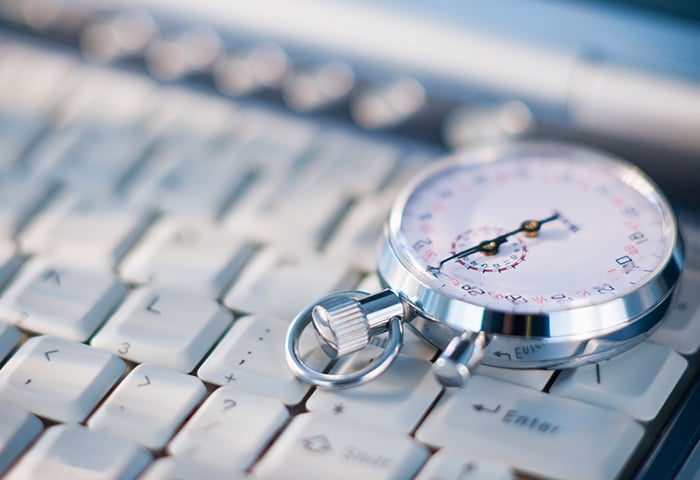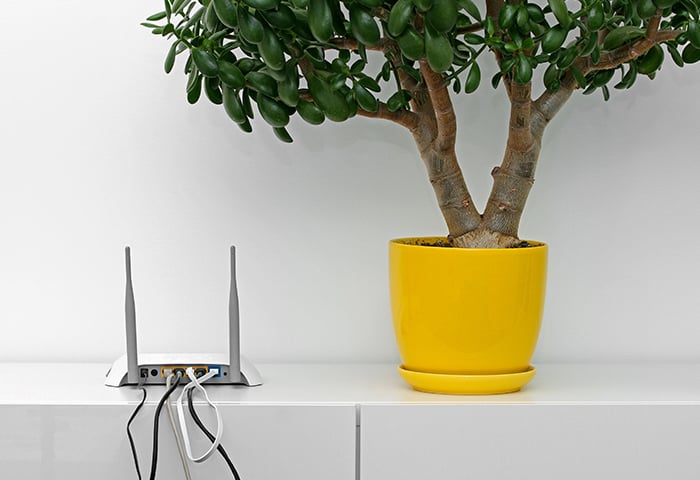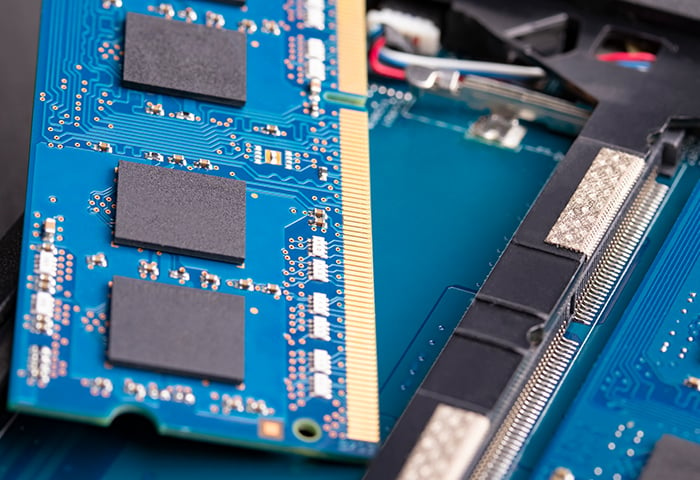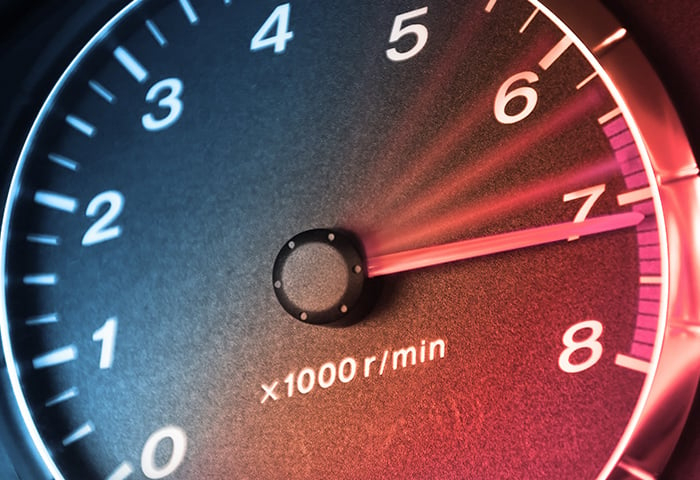How to upgrade RAM memory on your Mac
The following sections will show you how to upgrade the RAM on various Mac models. While some specifics may vary from one year’s model to the next, you should be able to follow along if you have one of these Mac computers: MacBook Pro or MacBook, iMac, Mac Mini, or a Mac Pro.
After adding your new RAM, check that you installed it successfully. Turn on your computer and follow the simple procedure described below in the section checking your RAM. For Windows and Linux users, check our guide to upgrading RAM on PC.
Upgrade RAM on MacBook Pro and MacBook
Not all MacBooks and MacBook Pros let you upgrade the RAM. If your model allows RAM upgrades, you’ll need to remove the computer’s back cover to access the memory module and perform a MacBook RAM upgrade. There’s unfortunately no way to upgrade memory for MacBook Air models.
%20-%20refresh/img_01.jpg?width=700&name=img_01.jpg)
Here’s how to upgrade RAM on your MacBook Pro or MacBook computer:
-
Turn off your MacBook or MacBook Pro and let it cool down completely. Disconnect all cords, cables, and accessories.
-
Flip the laptop over so it’s lying face down.
-
Remove the bottom case by unscrewing it. Be sure to note which screws come from which ports, as they may not all match.
%20-%20refresh/img_02.jpg?width=700&name=img_02.jpg) The underside of a MacBook Pro.
The underside of a MacBook Pro.
-
Touch a metal surface inside the computer to discharge any static electricity from your body.
-
Find the RAM module and eject it by using the ejection levers.
-
Pull the RAM module out without touching the gold connectors.
-
Repeat for the other RAM module, if present.
-
Insert your new RAM for your MacBook Pro or MacBook, again without touching the gold connectors.
-
Push the new module down until it clicks, then insert the second one.
-
Replace the bottom case and screw it back in.
Can you upgrade RAM on any MacBook Pro and MacBook?
MacBook Pro RAM and MacBook RAM upgrades are possible only with several older models, as well as with all 17” MacBook Pro models. You cannot add RAM to any MacBook Air.
The following MacBooks can receive DIY memory upgrades at home:
Upgrade RAM on iMac
You can add memory to any iMac except the newer 21.5” models. In most other cases, Apple has made it very convenient for iMac users to upgrade Mac RAM on their own at home.
%20-%20refresh/img_03.jpg?width=800&name=img_03.jpg)
27” iMac models from late 2012 and onward store RAM behind a small door on the back of the unit, while older 27” models and smaller models store RAM in slots along the bottom edge.
Upgrading RAM on a 27” iMac from late 2012 and onward
-
Shut down your iMac and let it cool down completely.
-
Disconnect all cords and cables.
-
Place a soft towel or cloth on your work surface, then gently lay the computer face down on it.
-
Press the button underneath the memory storage door to open it, then remove the door and place it somewhere nearby.
%20-%20refresh/img_04.jpg?width=500&name=img_04.jpg)
The memory storage door on an iMac.
-
You’ll see a diagram on the bottom of the door that displays the memory cage levers as well as the correct orientation of the RAM modules.
-
Push the two levers outward to unlock the memory cage, then pull them up. You’ll now be able to remove each module.
-
Remove a module by pulling it directly upwards, then insert a new one. Be sure to orient it correctly according to your iMac model, then push it down into the slot until it clicks into place.
-
When you’ve finished exchanging your old DIMMs (dual in-line memory modules, or RAM sticks) for new ones, push the memory levers back down until they click.
-
Put the memory compartment door back on and close it.
-
Return your computer to an upright position, then reconnect all your cords and cables.
-
Start up your iMac. It may remain dark for 30 seconds or more while it initializes its new memory. Don’t worry — that’s normal!
Upgrading RAM on all other eligible iMacs
Pre-2012 27” iMacs, eligible 21.5” iMacs, and older 20” and 15” iMacs store RAM in slots along the bottom of the unit. The specific shape and alignment of the RAM slots differ between models, but the replacement process is similar for all of them.
-
Shut down your iMac and let it cool down completely.
-
Disconnect all cords and cables.
-
Place a soft towel or cloth on your work surface, then gently lay the computer face down on it.
-
Remove the memory access door with a Phillips screwdriver, placing it nearby.
-
Depending on your iMac model, you’ll see either a set of pull tabs or ejector clips. Untuck and pull the tabs, or open the clips. Doing so will eject the current RAM module.
-
Remove the old RAM module, then insert your new one. You’ll feel it click into place.
-
If your iMac has pull tabs, tuck them back above the new RAM module. If it has ejector clips, close them.
-
Reinstall the memory access door with your Phillips screwdriver.
-
Return your computer to an upright position, then reconnect all your cords and cables.
-
Start up your iMac. Some pre-2017 iMacs will beep if they detect RAM problems. If this happens, make sure your new RAM module is compatible with your iMac and try reinstalling it.
Can you upgrade RAM on any iMac?
You can add memory to any iMac except the following 21.5” models:
-
Retina 4K, 2017 & 2019
-
2017
-
Mid-2014
-
Late 2013
-
Late 2012
Upgrade RAM on Mac Mini
Adding memory to Mac Minis is easiest with models from 2010 to 2012, since the 2014 models don’t have upgradeable RAM and the 2018 models are difficult to modify.
-
Turn off your Mac Mini, let it cool down, and disconnect all cords and cables.
-
Turn the computer upside down and unlock the bottom case by rotating it counterclockwise.
-
Press down on one side of the cover to tip the other side up, then remove it.
-
Open the clips on either side of the RAM module so it can pop up.
-
Remove the RAM module from the slot, then repeat this process for the module underneath it.
-
Insert new memory modules into bottom slots, taking care to properly align the notches. Press the raised edge down until it clicks into place.
-
Repeat for the upper module.
-
Replace the bottom cover, then reconnect all cords and accessories.
-
Restart your Mac Mini
Can you upgrade RAM on any Mac Mini?
It’s possible to add RAM to any Mac Mini from 2010 to 2012. Upgrading the memory on 2018 Mac Minis is also possible, but difficult.
Upgrade RAM on Mac Pro
The Mac Pro has undergone several redesigns. Here we’ll show you how to add memory to the most recent Mac Pro. If you have the “trash can” Mac Pro from 2013, you can follow this same basic process: remove the case, replace the RAM, reattach the case, and go.
-
Shut down your computer and let it cool down completely.
-
Disconnect all cords and cables.
-
Touch the Mac Pro’s metal casing to discharge any static electricity from your body.
-
Unlock the case by rotating the handle 90 degrees counterclockwise.
-
Pull up on the handle to remove the case.
-
Toggle the RAM cover switch to the left to open it, then remove the RAM module covers.
-
Push your new RAM module into the slot until it clicks into place. Hold it by the edges or corners, and be careful not to touch any of the gold connectors.
-
Replace the RAM module covers.
-
Replace the computer case then return the handle to the locked position by rotating 90 degrees clockwise.
-
Plug in all your cords and cables.
Can you upgrade RAM on any Mac Pro?
Yes, you can upgrade RAM on all Mac Pro models.
Why upgrade your Mac RAM memory?
Upgrading your RAM lets your computer perform more demanding tasks or handle more tasks at once without suffering performance hiccups. When it comes to speeding up your Mac, a RAM upgrade is one of the best ways to do it.
RAM stands for “random access memory” and is your computer’s brainpower for on-demand tasks. Your computer uses RAM to temporarily store information for anything it’s currently doing, like loading web pages, sending emails, running apps, and more.
Upgrading your MacBook Pro memory or other RAM yourself is not without risks. Any time you open up your computer to tinker around with its guts, you risk damaging sensitive components — as well as voiding Apple’s warranty. The same goes with speeding up your iPhone.
If you’d prefer to sidestep those potential challenges, optimize your computer with a tuneup instead. AVG TuneUp will boost your Mac’s performance with no RAM upgrades required. Free up disk space and get automatic maintenance to get your Mac running like new.
How to check your Mac RAM memory
To check the RAM on your Mac, open the Apple menu in the top-left corner of your screen and click About this Mac.
%20-%20refresh/img_05.png?width=300&name=img_05.png) The Overview tab displays basic information about your device. You’ll find your current amount of RAM listed under Memory.
The Overview tab displays basic information about your device. You’ll find your current amount of RAM listed under Memory.
%20-%20refresh/img_06.png?width=600&name=img_06.png)
Here, you can also check the model type and the year of your Mac. This will help you determine if it’s even possible to upgrade your RAM yourself, or at all. Check your Mac model to make sure you can add memory before you buy new RAM.
If you can’t upgrade your RAM, try cleaning your Mac to help it perform faster. Clearing your Mac’s cache can give you a quick speed boost, as can optimizing your browser.
Not all Macs can accept new RAM, but you can use AVG TuneUp on any Mac to speed it up and improve its performance. Clean and optimize your disk, find and delete space-hogging files, sort and streamline your photo library, and more.
Where should I buy more Mac RAM memory?
For safe Mac RAM shopping, you’ve got three options: buy directly from Apple, from an aftermarket supplier, or from a certified refurbisher. In all three cases, you’ll get RAM that works with your computer, and that you can return if something goes wrong.
-
Buy more RAM from Apple
Sourcing your RAM directly from Apple is the safest but most expensive option. You’ll get an official Apple component that’s protected by Apple’s warranty and return policies.
If you’re buying a new Mac, configure it up-front with the total amount of RAM you want. Many new Mac models can’t receive RAM upgrades, so you’re stuck with whatever you choose when buying your computer.
-
Buy more RAM from aftermarket suppliers
You’ll find a lot of trustworthy options for buying RAM online. Read reviews to see what other shoppers have to say, and look for established vendors with good reputations. That way, you’re covered in case you buy the wrong type of RAM, or if it doesn’t perform as it should.
-
Buy more RAM from a certified refurbisher
Apple refurbishes older devices and resells them at discounted rates — and you’ll sometimes see them doing the same with Mac RAM. Other companies offer this service as well — look for a “certified refurbisher” that’s approved by Apple.
RAM modules purchased this way will also come with warranties and return policies, though the coverage typically won’t last as long as what you’d get with new items. That’s the trade-off you’ll make in exchange for getting cheaper RAM.
While you could buy second hand RAM for your MacBook Pro or other Mac, you likely won’t be protected by similar guarantees. The last thing you need after buying a Mac RAM upgrade is to get something that doesn’t work and that you can’t return.
Trustworthy components are just one aspect of overall Mac security. Installing RAM from unverified sources may expose your Mac to malware.
What to consider before you buy Mac RAM
-
Every computer has a fixed amount of RAM slots, and once these are filled, you can’t add more. At this point, you can increase the amount of RAM — measured in gigabytes (GB) — only by exchanging the RAM chips you currently have for ones with more capacity.
-
Each Mac model also has a maximum amount of RAM that it can handle. Before you go through the trouble (and expense) of buying new RAM, check the maximum RAM for your Mac. You may already be at maximum RAM capacity.
-
Buy a RAM chip that’s usable in your Mac device — not all RAM types work in all computers. You don’t want to get stuck with a bunch of RAM that you can’t use.
Improve your Mac’s performance without new RAM
RAM is expensive, and many newer Macs don’t allow you to add or replace RAM at all. Fortunately, a RAM upgrade isn’t the only way to boost your computer’s speed and performance.
AVG TuneUp keeps your Mac running at optimal levels by eliminating everything you don’t need — say goodbye to junk files, useless bloatware, and other performance-sapping digital trash. And if there’s a RAM upgrade in your immediate future, AVG TuneUp will ensure you get the most out of that shiny new memory.

%20-%20refresh/img_01.jpg?width=700&name=img_01.jpg)
%20-%20refresh/img_02.jpg?width=700&name=img_02.jpg) The underside of a MacBook Pro.
The underside of a MacBook Pro.%20-%20refresh/img_03.jpg?width=800&name=img_03.jpg)
%20-%20refresh/img_04.jpg?width=500&name=img_04.jpg)
%20-%20refresh/img_05.png?width=300&name=img_05.png) The Overview tab displays basic information about your device. You’ll find your current amount of RAM listed under Memory.
The Overview tab displays basic information about your device. You’ll find your current amount of RAM listed under Memory.%20-%20refresh/img_06.png?width=600&name=img_06.png)
/How-to-speed-up-your-iPhone-Thumb.jpg)













